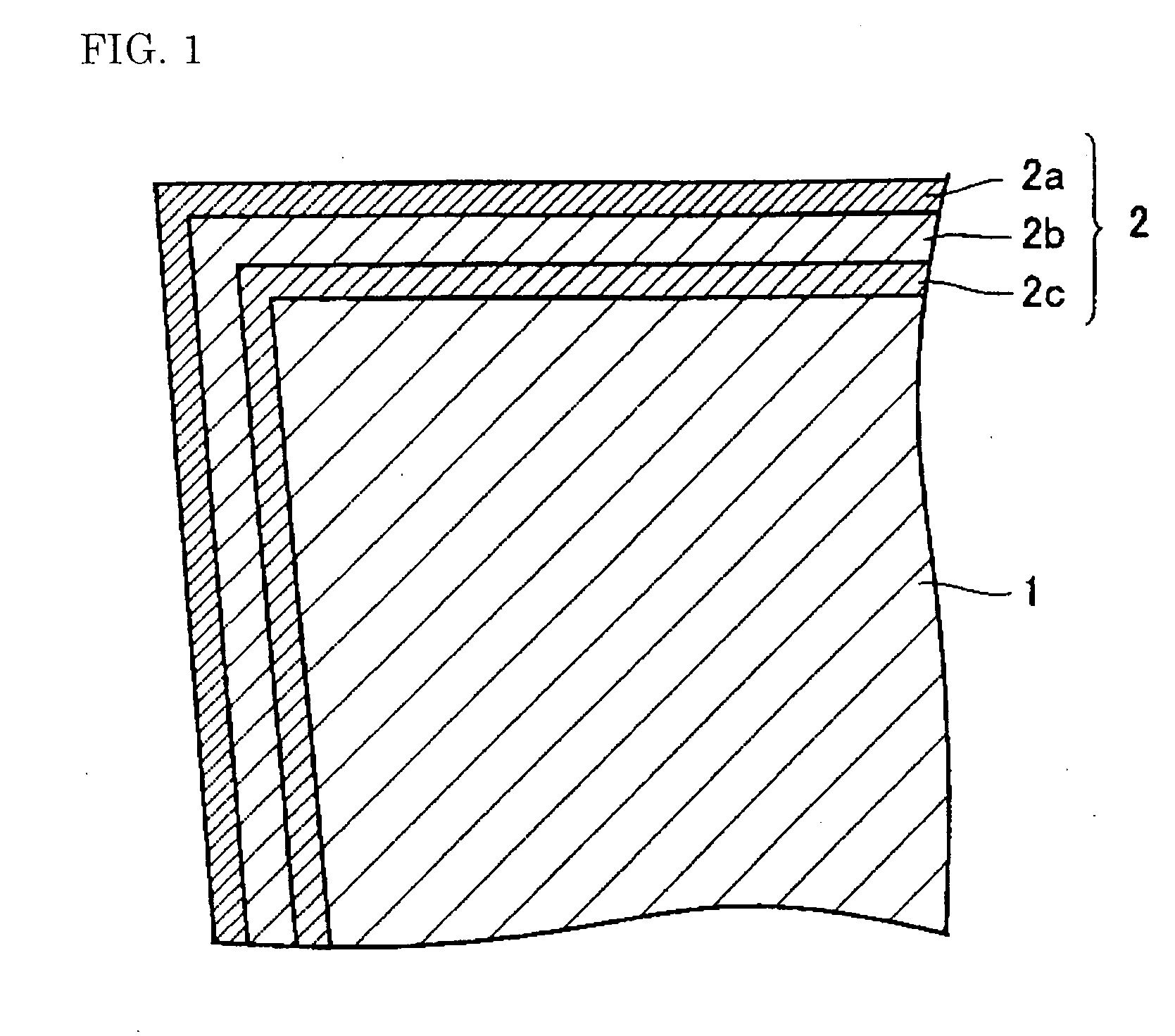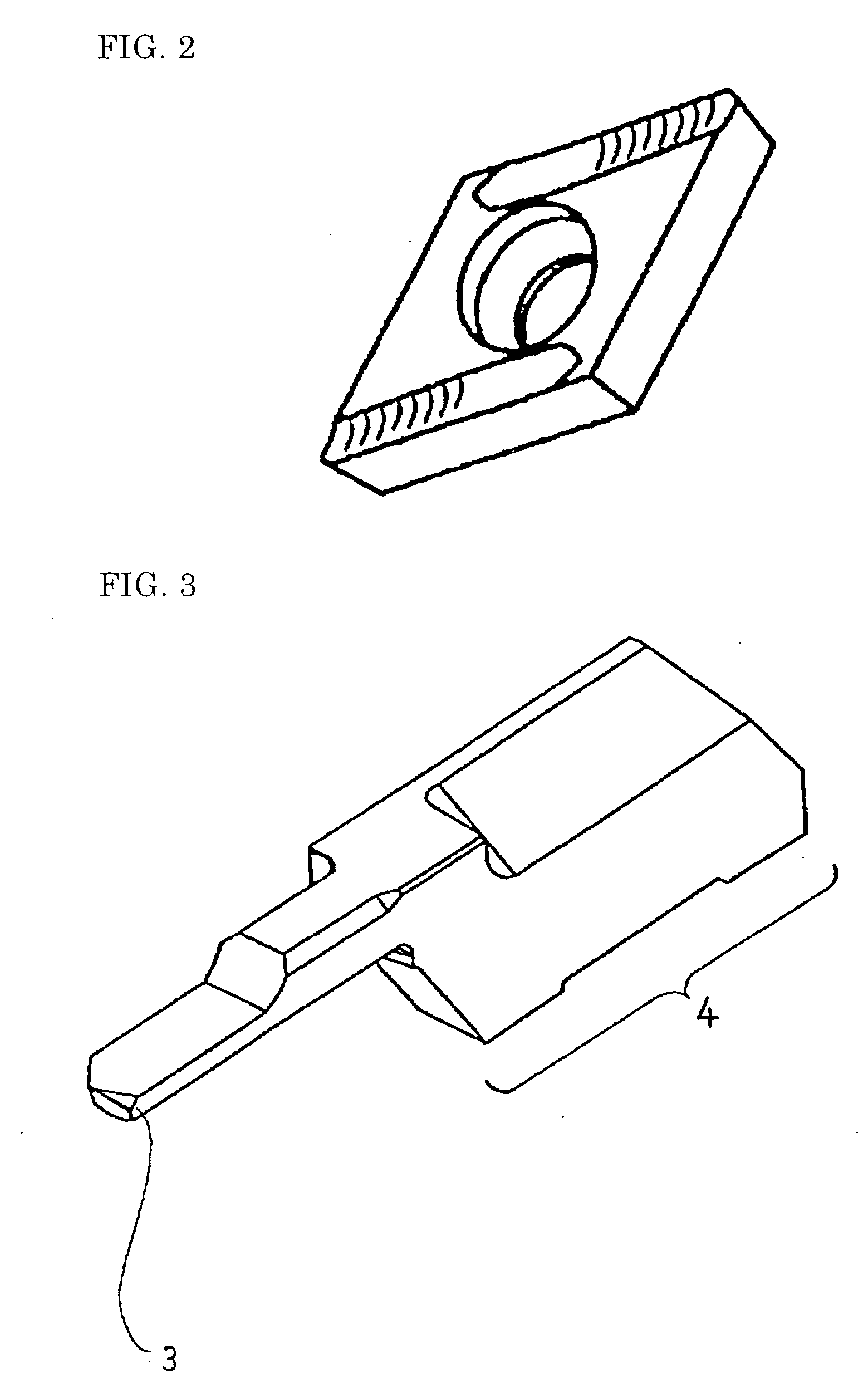Cutting tool coated using PVD process
a technology of cutting tools and coatings, applied in the direction of manufacturing tools, natural mineral layered products, transportation and packaging, etc., can solve the problems of inability to use tools anymore, inability to reliably use ordinary coated indexable inserts as cutting tools for high-precision machining, and chipping of coatings
- Summary
- Abstract
- Description
- Claims
- Application Information
AI Technical Summary
Benefits of technology
Problems solved by technology
Method used
Image
Examples
examples 1 to 12
[0056] To prove the effect of the present invention, 12 types of samples were produced as Examples 1 to 12. The substrate used for the samples was cemented carbide which had WC having an average particle diameter of 1.0 .mu.m, which had a Co content of 10 wt. %, and which had a Vickers hardness of 15 GPa. By using the substrate, indexable inserts having the shape as shown in FIG. 2 were produced. The indexable insert had a diamond shape with a vertex angle of 55 degrees, had a flank with a clearance angle of 7 degrees, and had a rake face with a rake angle of 20 degrees. To perform high-precision machining, the polished substrate had a cutting part with an incisive sharp edge having a positive shape. The rake face and the flank had a surface roughness, Ra, of 0.2 .mu.m. Various coatings were used as shown in Table I. The coating was formed over the substrate using the arc ion-plating method, which is an ordinary method as the PVD process. The indexable insert was attached to an ordi...
examples 13 to 15
[0069] To confirm the effect of the cemented carbide as the substrate on the cutting performance, indexable inserts were produced by using the same procedure as used in Example 1, except for that the cemented carbides as shown in Table IV were used. The produced indexable inserts were subjected to the cutting of 1,000 work materials to evaluate the machined-surface quality and the dimensional variation. The results of the evaluation are also shown in Table IV. The evaluation method is the same as for Example 1.
4TABLE IV Machined-surface Dimensional quality variation Average (after (after Substrate particle Co Vickers cutting cutting (cemented diameter content hardness 1,000 1,000 carbide) (.mu.m) (wt %) (GPa) materials.) materials.) Example 13 0.5 5.0 21.5 .circleincircle. 7.1 Example 14 0.8 8.0 19.2 .circleincircle. 5.2 Example 15 1.3 12.0 15.2 .circleincircle. 6.2 Comparative 2.0 1.0 25.2 X 35.3 example 7 Comparative 2.0 8.0 14.3 X 45.2 example 8 Comparative 1.8 20.0 13.0 X 58.1 e...
examples 16 and 17
[0072] To confirm the effect of the cermet as the substrate on the cutting performance, indexable inserts were produced by using the same procedure as used in Example 1, except for that as the cermet, TiCN shown in Table V were used. The produced indexable inserts were subjected to the cutting of 1,000 work materials to evaluate the machined-surface quality and the dimensional variation. The results of the evaluation are also shown in Table V. The evaluation method is the same as for Example 1.
5TABLE V Machined-surface Dimensional quality variation Average (after (after particle Co Vickers cutting cutting Substrate diameter content hardness 1,000 1,000 (cermet) (.mu.m) (wt %) (GPa) materials.) materials.) Example 16 0.5 12.0 18.3 .circleincircle. 7.1 Example 17 1.3 8.0 17.2 .circleincircle. 5.2 Comparative 2.5 25.0 12.2 X 42.9 example 10
[0073] As can be seen from Table V, in Examples 16 and 17, a beautiful machined surface free from a whitish portion was obtained and the dimensional...
PUM
| Property | Measurement | Unit |
|---|---|---|
| Pressure | aaaaa | aaaaa |
| Pressure | aaaaa | aaaaa |
| Thickness | aaaaa | aaaaa |
Abstract
Description
Claims
Application Information
 Login to View More
Login to View More - R&D
- Intellectual Property
- Life Sciences
- Materials
- Tech Scout
- Unparalleled Data Quality
- Higher Quality Content
- 60% Fewer Hallucinations
Browse by: Latest US Patents, China's latest patents, Technical Efficacy Thesaurus, Application Domain, Technology Topic, Popular Technical Reports.
© 2025 PatSnap. All rights reserved.Legal|Privacy policy|Modern Slavery Act Transparency Statement|Sitemap|About US| Contact US: help@patsnap.com



